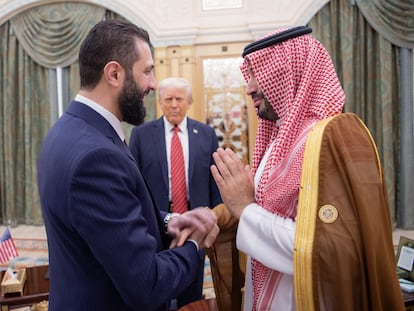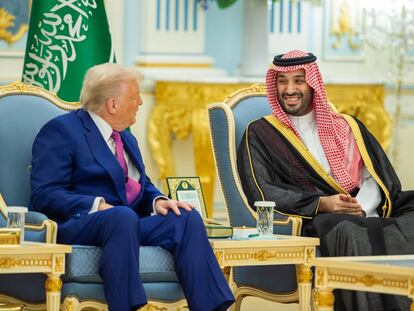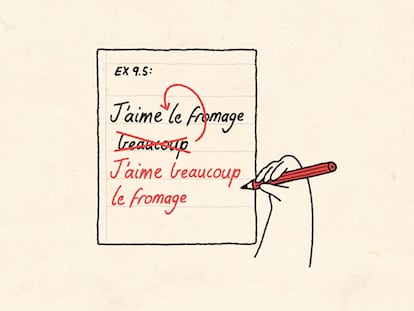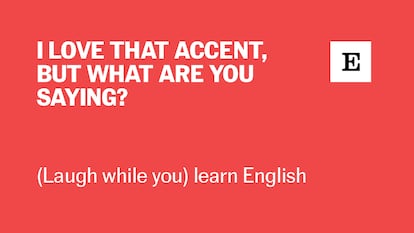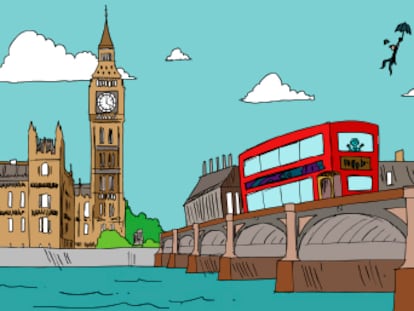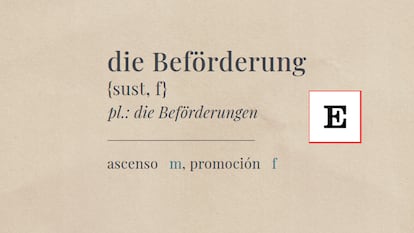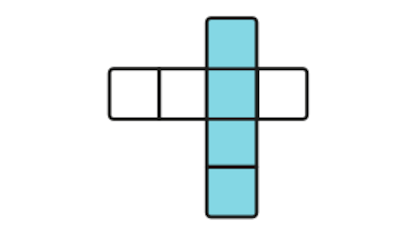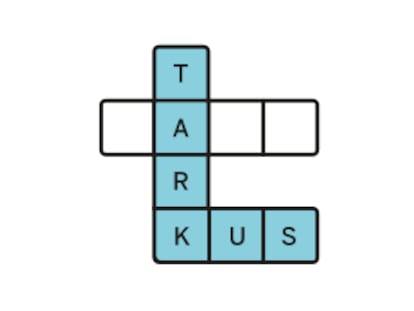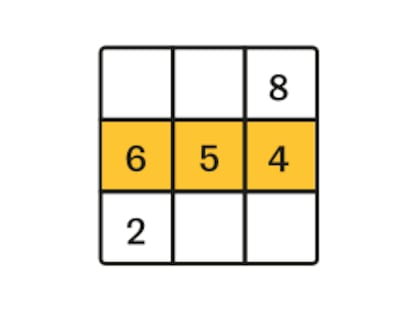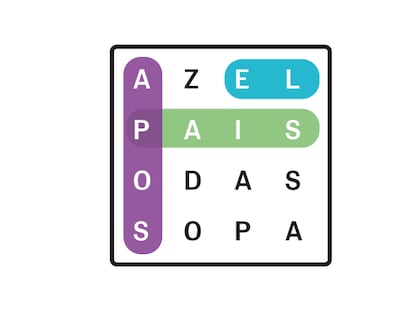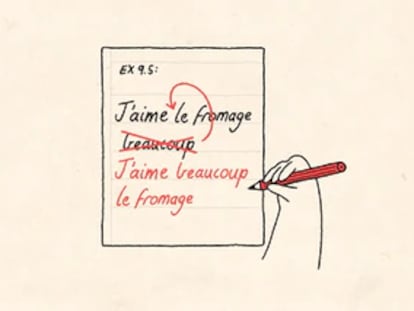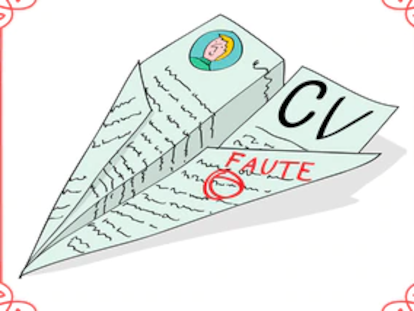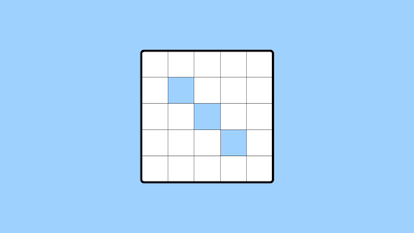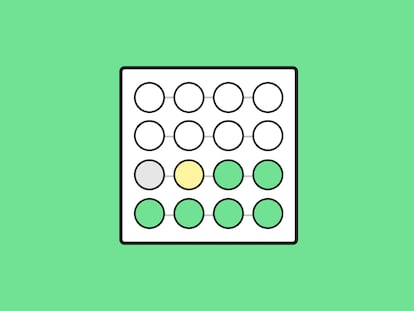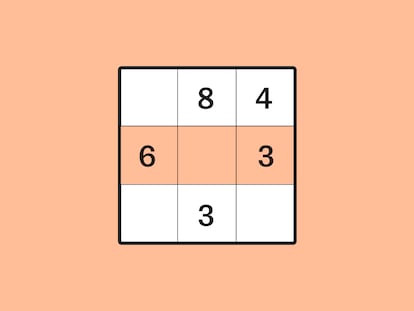Trump’s Middle East tour relegates Israel to the sidelines
The US president is reaching out to Gulf countries on a trip that underscores his friction with Netanyahu, especially over Gaza
The beaming smiles exchanged by Donald Trump and Israeli Prime Minister Benjamin Netanyahu at the White House in February, when they announced their plan to turn Gaza into the “Riviera of the Middle East,” now seem a distant memory. The U.S. president is concluding a tour of the region this Friday — a tour that did not include Israel — during which he strengthened ties with Gulf states through multi-million-dollar deals.
During his trip, the Republican president shifted his Middle East policy by welcoming Syria back into the international community and confirming that the nuclear deal with Iran is on track — all to Israel’s displeasure. The country that prides itself on being Washington’s closest ally in the region has had to watch this rapprochement from the sidelines, while tensions with the U.S. have grown in recent weeks, especially over Iran, but also concerning Gaza.
In recent weeks, Trump has made bold moves in the Middle East without consulting his key geopolitical partner, relegating Israel to the background. The most recent was his Wednesday meeting with Syria’s new leader, Ahmed al Shara, in Riyadh, during a tour of Saudi Arabia, Qatar, and the United Arab Emirates — his first of this term — following the announcement the day before that U.S. sanctions on Syria would be lifted. Washington had maintained those sanctions even after Bashar al-Assad’s regime was overthrown in December.
Trump disregarded Israel’s request to maintain those sanctions. Netanyahu’s government describes Syria’s interim president as a jihadist — his organization, Hayat Tahrir al-Sham, was affiliated with al-Qaeda until 2016 — dressed up in a suit and tie.
There were other initiatives that Israel only learned about when the press did. The first was the start of negotiations on a nuclear deal between Washington and Israel’s regional nemesis, Iran — Trump said on Thursday that both sides are very close to finalizing an agreement. The second was a pact with Houthi rebels in Yemen, under which the militants agreed to stop attacking merchant ships in the Red Sea in exchange for the U.S. halting its airstrikes on them.
That agreement, reached in early May, does not require the Houthis to stop launching missiles at Israel in retaliation for its offensive in Gaza. “The message to the region was clear: Israel is no longer a top U.S. priority,” wrote Itamar Eichner, diplomatic correspondent for Israeli news outlet Ynet, at the time.
While the U.S. president was boasting about that pact in Riyadh, sirens were sounding in Jerusalem and Tel Aviv on Tuesday to warn of an incoming Houthi missile.
Israel was also left out of secret negotiations between the Trump administration and the Palestinian Islamist group Hamas, which resulted in the release this past Monday of U.S. soldier Edan Alexander. He was the last living U.S. citizen among the 59 — almost all Israeli — hostages still held by the group out of the 251 taken during the October 7, 2023 attacks in Israel. Israel’s response to those attacks was to launch its offensive in Gaza.
Netanyahu later tried to take credit for the soldier’s release, attributing it in part to military pressure in the Gaza Strip. But according to Haaretz columnist Yossi Verter, the U.S. negotiations with Hamas inflicted a “painful humiliation” on the Israeli prime minister.
A “brutal” war
When Trump announced during his February meeting with Netanyahu at the White House his plan to turn Gaza into a luxury beach resort — the Riviera of the Middle East — the Israeli prime minister enthusiastically embraced the project as his own. That plan is still on the table, but the Israeli prime minister and the U.S. president diverge on a fundamental issue: Trump wants to end the war as soon as possible — a war he described on Wednesday as “brutal” — while Netanyahu has said it will only end with a “total victory” over Hamas.
Washington has recently shown signs of frustration with Netanyahu’s intransigence. U.S. Secretary of State Marco Rubio said on Thursday that he had spoken with Netanyahu to express the U.S. government’s concern about the humanitarian situation in Gaza.
The newspaper Haaretz revealed the day before that Trump’s special envoy for the Middle East, Steve Witkoff, repeatedly called Netanyahu this week to urge him to be more flexible in the negotiations Israel is conducting in Doha, Qatar, with Hamas. That dialogue has yet to yield results, as Netanyahu refuses to end the Israeli offensive even if the Palestinian Islamist group releases all hostages. On the contrary, on May 5, Netanyahu announced his intention to conquer and occupy the Palestinian territory.
During the final leg of Trump’s trip on Thursday, the United Arab Emirates announced a $1.4 trillion investment in the U.S. over 10 years. Previously, Saudi Arabia and Qatar had also courted Trump, signing multibillion-dollar deals to purchase U.S. arms, aircraft, and technology. Meanwhile, Israel was intensifying its bombings in Gaza, killing nearly 200 Palestinians in 48 hours — pushing peace, which Trump claims to want, even further out of reach. Even if the ultimate goal is to do business and build skyscrapers and golf courses in the Gaza Strip after displacing its population.
Rouzbeh Parsi, from the Middle East and North Africa Programme at the Swedish Institute of International Affairs, believes that “Trump is probably listening to the Gulf countries telling him to keep negotiating with Iran and stop the Israelis in the Gaza Strip. On both issues, Netanyahu is on the opposite side.”
The U.S. president also aims to boost the growing diplomatic mediation roles of countries like Qatar — mediator with Hamas — and Saudi Arabia, which has hosted several rounds of Ukraine peace talks. He sees them as investors, as buyers of U.S. defense and technology products — in Riyadh, the U.S. signed $600 billion worth of agreements — and as energy exporters. No less important, they are key players in his effort to control global gas and oil prices.
According to Mexican researcher Fernando Carvajal, an expert on Yemen and U.S. foreign policy in the Middle East — and a former member of the U.N. Panel of Experts on Yemen (2017–2019) — Trump’s main goal in the region is to “guarantee U.S. interests,” even if that means upsetting Israel, he explains from Los Angeles.
“Trump hasn’t sold out Israel” with agreements like the non-aggression pact with the Houthis, says the expert, “but he’s not helping Netanyahu either.” The president’s style is to apply one of his slogans, he notes: “America First.”
The U.S. president insists that relations with Israel remain excellent, but officials from both countries — cited anonymously in a Haaretz analysis — say the relationship between Netanyahu and Trump “has hit rock bottom.”
“It seems Trump’s patience with Netanyahu’s maneuvers is running out,” says Rouzbeh Parsi. For him, the “more difficult” question is “what this distancing will mean in the medium term and whether it will become policy rather than just a temporary dispute.” He therefore advises caution when speaking of a cooling of relations.
Israel is still considered an essential ally by Washington, despite being relegated to a secondary role in recent days. And Trump — the former real estate developer — hasn’t forgotten his dreams of turning Gaza into the Riviera of the Middle East. From Abu Dhabi on Thursday, he declared that he still wants the United States to “own” the Gaza Strip. He says he wants to turn it into “a freedom zone.”
Sign up for our weekly newsletter to get more English-language news coverage from EL PAÍS USA Edition
Tu suscripción se está usando en otro dispositivo
¿Quieres añadir otro usuario a tu suscripción?
Si continúas leyendo en este dispositivo, no se podrá leer en el otro.
FlechaTu suscripción se está usando en otro dispositivo y solo puedes acceder a EL PAÍS desde un dispositivo a la vez.
Si quieres compartir tu cuenta, cambia tu suscripción a la modalidad Premium, así podrás añadir otro usuario. Cada uno accederá con su propia cuenta de email, lo que os permitirá personalizar vuestra experiencia en EL PAÍS.
¿Tienes una suscripción de empresa? Accede aquí para contratar más cuentas.
En el caso de no saber quién está usando tu cuenta, te recomendamos cambiar tu contraseña aquí.
Si decides continuar compartiendo tu cuenta, este mensaje se mostrará en tu dispositivo y en el de la otra persona que está usando tu cuenta de forma indefinida, afectando a tu experiencia de lectura. Puedes consultar aquí los términos y condiciones de la suscripción digital.
More information
Archived In
Últimas noticias
Most viewed
- Sinaloa Cartel war is taking its toll on Los Chapitos
- Oona Chaplin: ‘I told James Cameron that I was living in a treehouse and starting a permaculture project with a friend’
- Reinhard Genzel, Nobel laureate in physics: ‘One-minute videos will never give you the truth’
- Why the price of coffee has skyrocketed: from Brazilian plantations to specialty coffee houses
- Silver prices are going crazy: This is what’s fueling the rally
